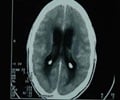Ceftizoxime Medication Information
Learn everything you need to know about Ceftizoxime-pronunciation, uses, dosage guidelines, indications, and when to take or avoid it.
Get up-to-date information on side effects, precautions, warnings, and proper storage to ensure safe usage.
Explore Ceftizoxime brand names commonly used in India and internationally, along with detailed pricing information. Consult your healthcare provider for tailored medical advice.
Generic Name : Ceftizoxime Pronunciation : Cef-ti-zo-xi-me Therapeutic Classification : AntibioticsBrand Names or Trade Names of Ceftizoxime
India :
Overview of Ceftizoxime
• Ceftizoxime is a semisynthetic third generation cephalosporin antibiotic particularly used in treating a wide range of bacterial infections.Why is Ceftizoxime Prescribed? (Indications)
Ceftizoxime is active against a wide range of gram-positive and gram-negative organisms and is used in the treatment of lower respiratory tract infections, gonorrhea, pelvic inflammatory disease that also has appropriate antichlamydial coverage, intra abdominal infections, septicemia, skin infections, bone and joint infections, and in infections that are resistant to other cephalosporins, aminoglycosides, or penicillins.Ceftizoxime belongs to the third generation cephalosporin antibiotic class. It is resistant to a board spectrum of beta-lactamases. It acts by interfering with the last step (cross-linking of peptidoglycans) of cell wall synthesis in bacteria. This leads to a reduction of cell wall stability and leads to cell lysis.
Ceftizoxime sodium is the sodium salt form of ceftizoxime.
When should Ceftizoxime not be taken? (Contraindications)
• It is contraindicated in patients who are allergic to ceftizoxime.What is the dosage of Ceftizoxime?
The recommended dose of ceftizoxime is determined by the condition of the patient, severity of the infection, and susceptibility of the causative organisms.Intravenous solution constitution is 1g/50 ml or 2g/50ml
Adults Dose:
• Uncomplicated gonorrhea: 1 g intramuscular as a single dose.
• Skin and intra-abdominal infections: 1 g intravenous/intramuscular every 8-12 hours
• Meningitis: 1 g intravenous/intramuscular every 8 hours or 2 g intravenous/intramuscular every 8-12 hours
• Urinary Tract Infection: 1-2 g intravenous/intramuscular every 8-12 hours
Dosage for children is 100-200mg/kg/day every 6-8 hours and for patients with renal impairment with creatinine clearance < 50 mL/min, the loading dose is 0.5-1 g.
How should Ceftizoxime be taken?
• This injection is taken through muscles or vein.• Intravenous infusion should be administered either as a continuous or intermittent infusion over 15 to 30 min.
What are the warnings and precautions for Ceftizoxime?
• Caution should be taken in the patient with a history of gastrointestinal disease, especially colitis.• It should be used carefully in patients with hypersensitivity to cephalosporin and penicillin drugs. The patient should be regularly monitored for hypersensitivity.
• If the patients are given the maximum dose for a severe illness he/she should be monitored for renal function.
What are the side effects of Ceftizoxime?
General: Pain at injection site, numbnessGastrointestinal: Pseudomembranous colitis (inflammation of the colon with watery or bloody diarrhea)
Hematologic: Eosinophilia, thrombocytosis
Skin: Maculopapular rash, pruritus
Other: Hypersensitivity reactions, elevated temperature.
What are the other precautions for Ceftizoxime?
• Contact doctor if you observe bloody or watery stool• Entire course of the medication should be finished
• Prothrombin activity should be monitored in patients with kidney problems, liver problems, and malnutrition










